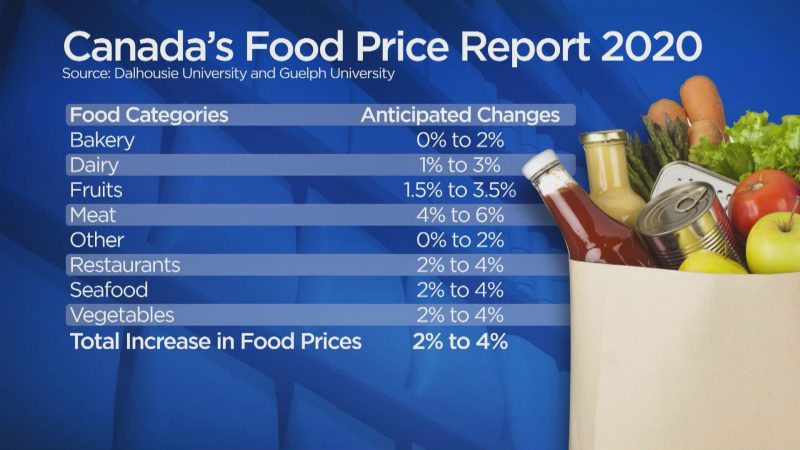According to a new report from Dalhousie University and the University of Guelph, the average Canadian family is set to spend a lot more at the grocery store.

Each year, Canada’s Food Price Report predicts changes in the major food categories and outlines the factors, both expected and unforeseen, that influence the cost to the consumer.
This year’s report forecasts that overall food prices in Canada will increase between two and four per cent, and that the average Canadian family will spend $12,667 on their annual grocery bill — an increase of $487 compared to the 2019 model.
One of the events that has triggered this rise in price is the COVID-19 pandemic.
“The reason that we released the report this week is that we actually believe that COVID could make things worse,” said Sylvain Charlebois, director of the Agri-Food Analytics Lab at Dalhousie University, and the report’s lead author.
“Right now the food inflation rate is at about two per cent, while the general inflation rate is at zero per cent.
“You can see that really over time — because of COVID and because of the economy — it will get more expensive at the grocery store, while for everything else, things are probably going to remain the same for a while.”
In addition to the coronavirus pandemic, the report also sees climate change as the “elephant in the room,” and how events such as droughts and forest fires, as well as a rise in ocean levels, all play a role in affecting our food systems.

“Canada does buy about $3 billion worth of food wholesale every year from California, but a lot of it actually goes to the west — Alberta, B.C. — between October and January.
“We are expecting that phenomenon to impact food prices, and not just out west, but everywhere in Canada.”
Something else that Charlebois says was identified from creating this year’s report is that the food inflation index has outpaced the general inflation rate by about 16 points overall over the last 20 years.

During this time, one item that has continued to grow in price is baby food.
“The demand elasticity for baby food is very high. If you buy it, you need it, and you won’t necessarily look at the price,” Charlebois explained.
Conversely, the price of a jar of peanut butter has remained relatively the same price, or even cheaper, year-over-year since 2000, which Charlebois says is due to increased competition from other brands and private labels.





Comments